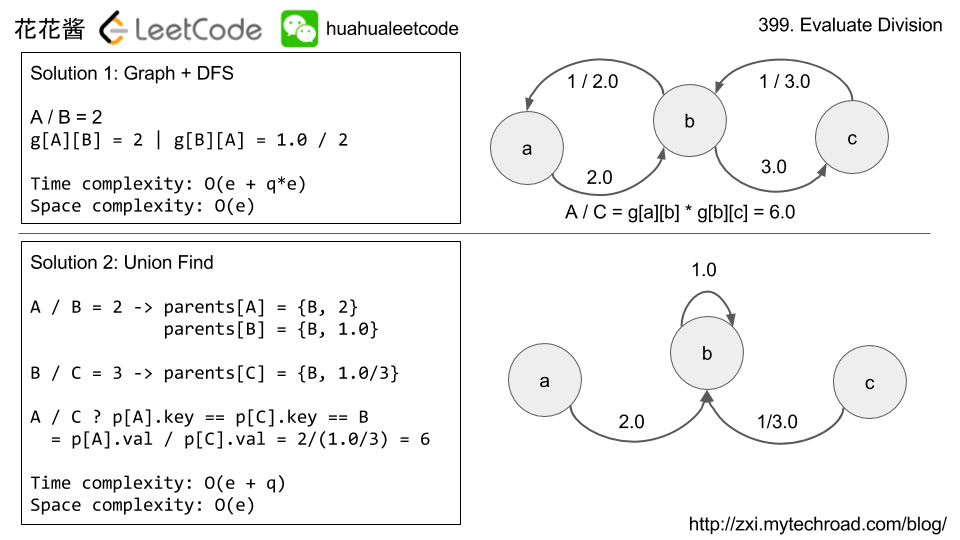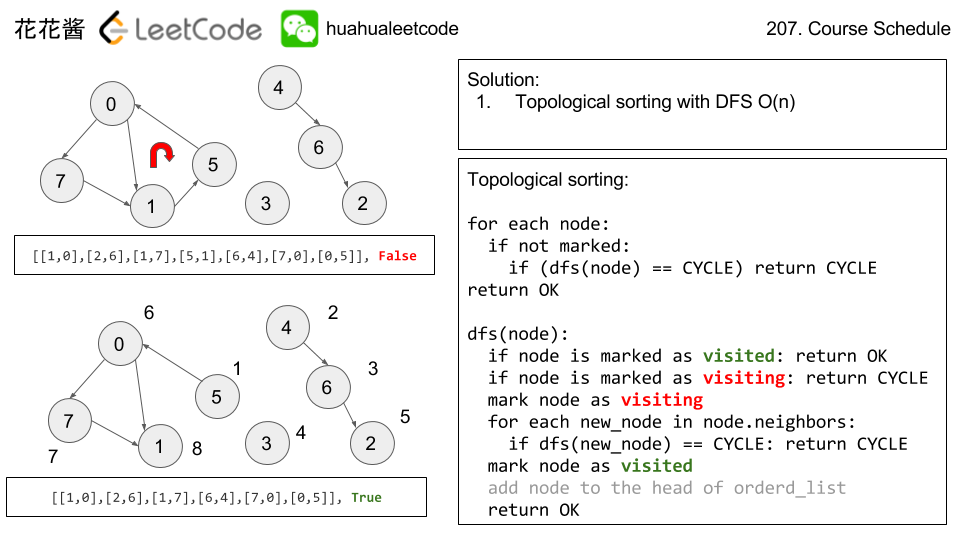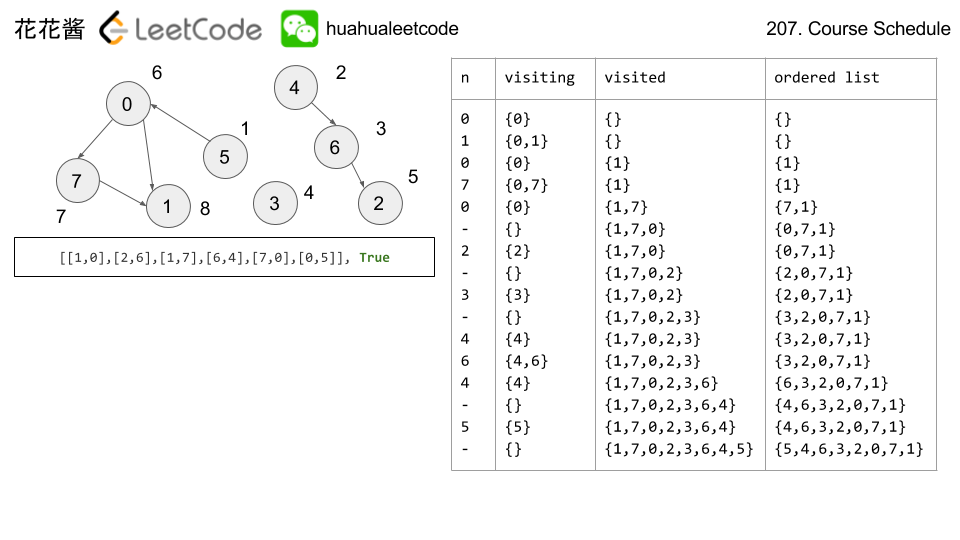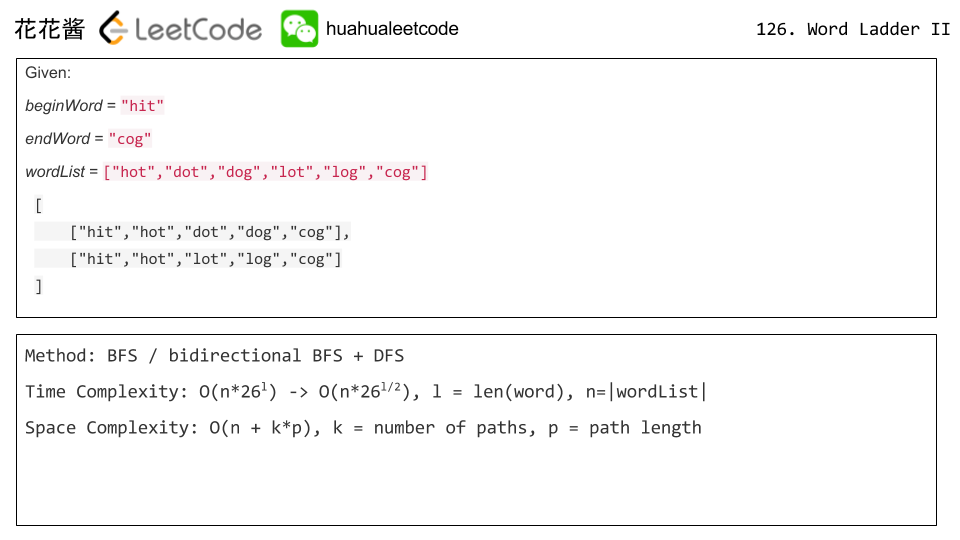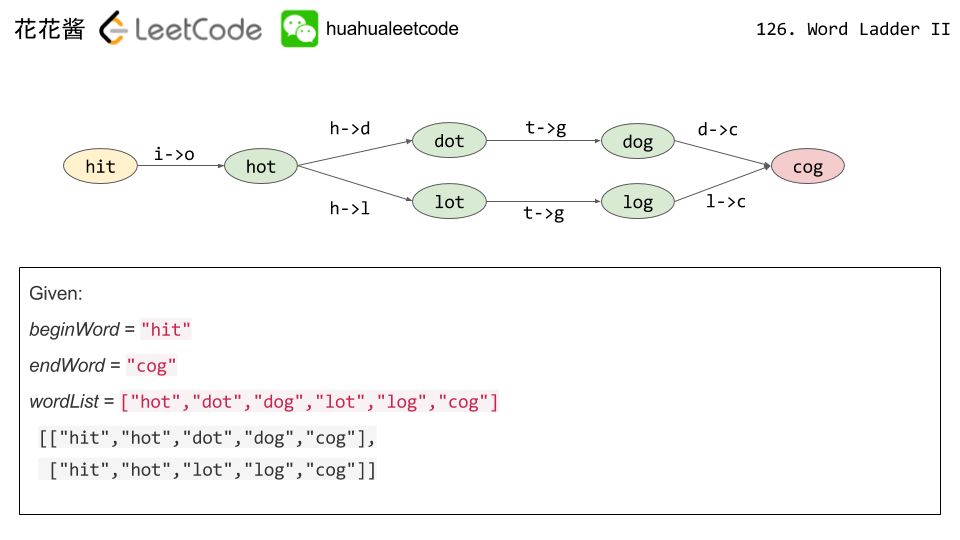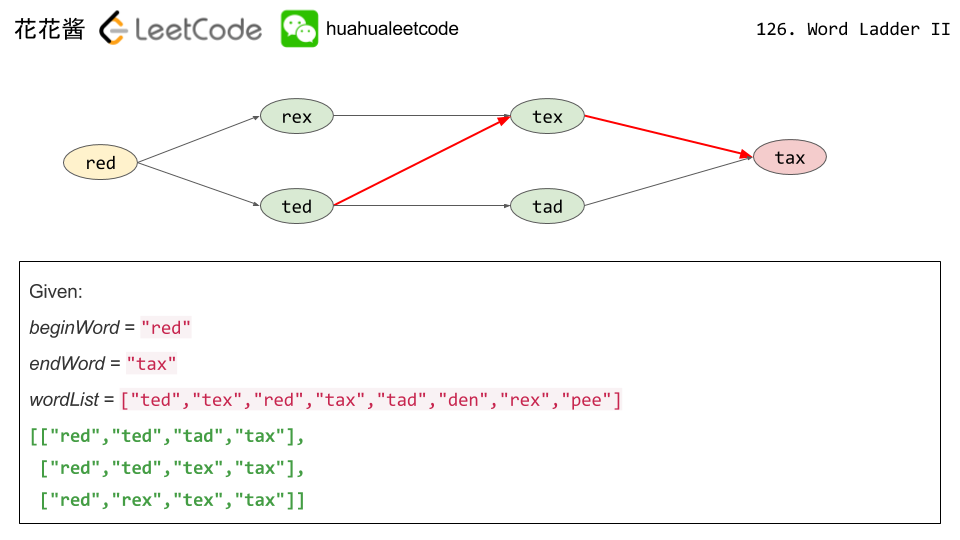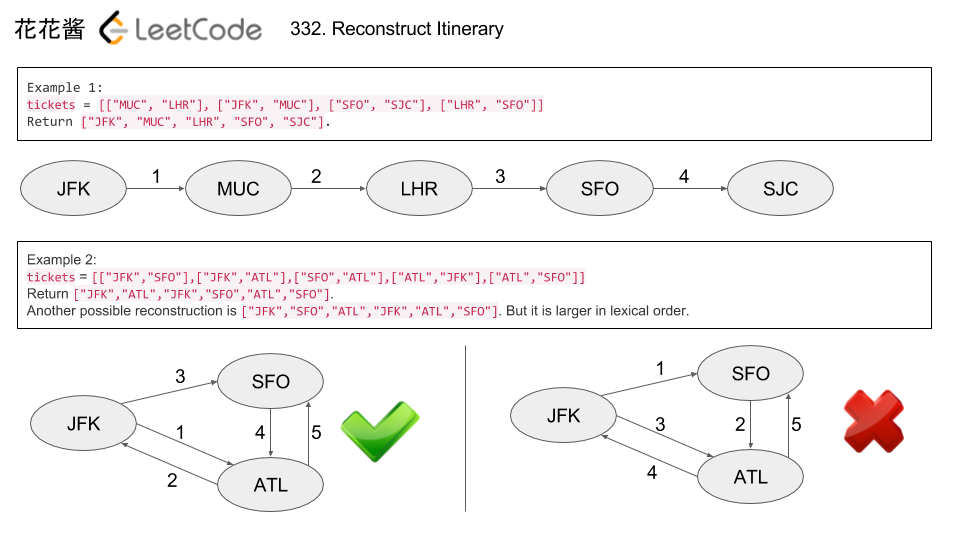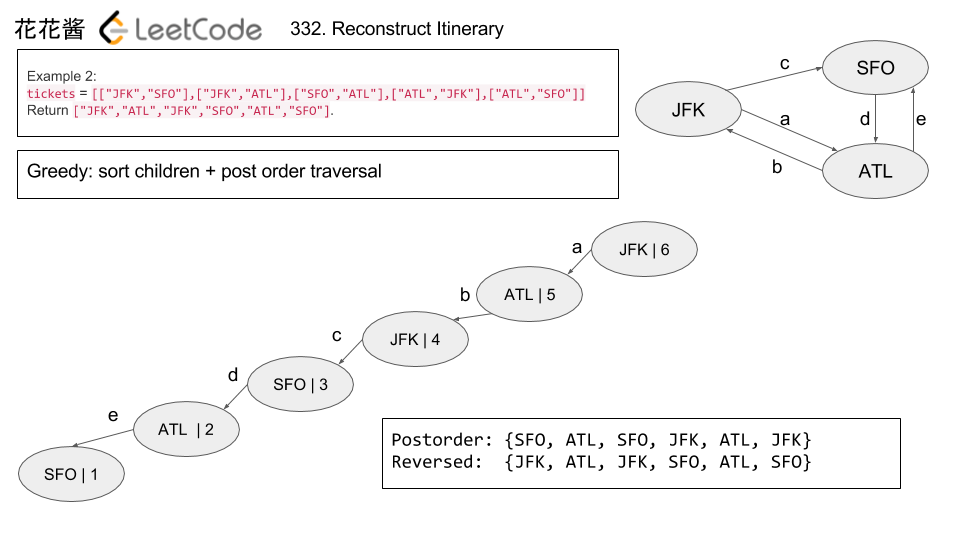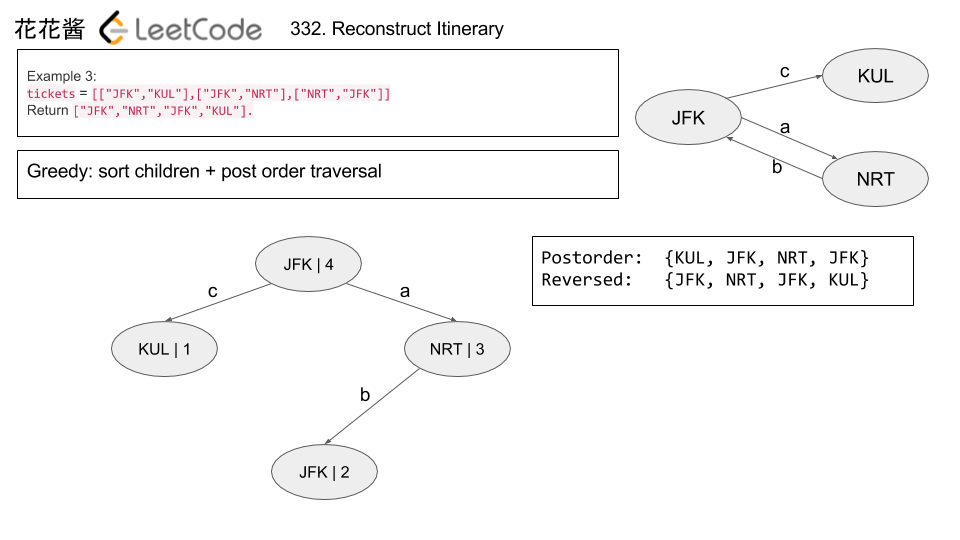There are N network nodes, labelled 1 to N.
Given times, a list of travel times as directed edges times[i] = (u, v, w), where u is the source node, v is the target node, and w is the time it takes for a signal to travel from source to target.
Now, we send a signal from a certain node K. How long will it take for all nodes to receive the signal? If it is impossible, return -1.
Note:
Nwill be in the range[1, 100].Kwill be in the range[1, N].- The length of
timeswill be in the range[1, 6000]. - All edges
times[i] = (u, v, w)will have1 <= u, v <= Nand1 <= w <= 100.
Idea:
Construct the graph and do a shortest path from K to all other nodes.
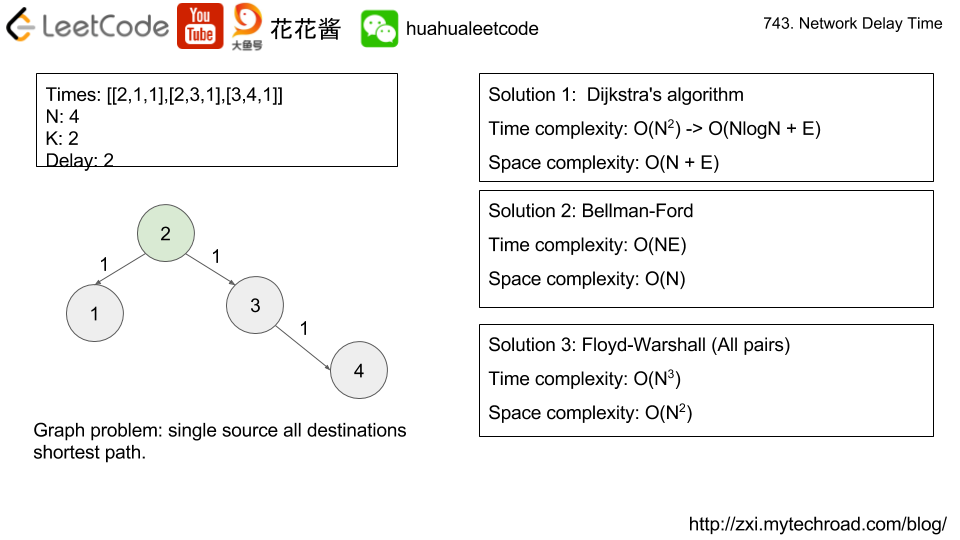
Solution 2:
C++ / Bellman-Ford
Time complexity: O(ne)
Space complexity: O(n)
|
1 2 3 4 5 6 7 8 9 10 11 12 13 14 15 16 17 |
// Author: Huahua // Runtime: 92 ms class Solution { public: int networkDelayTime(vector<vector<int>>& times, int N, int K) { constexpr int MAX_TIME = 101 * 100; vector<int> dist(N, MAX_TIME); dist[K - 1] = 0; for (int i = 1; i < N; ++i) for (const auto& time : times) { int u = time[0] - 1, v = time[1] - 1, w = time[2]; dist[v] = min(dist[v], dist[u] + w); } int max_dist = *max_element(dist.begin(), dist.end()); return max_dist == MAX_TIME ? -1 : max_dist; } }; |
Solution3:
C++ / Floyd-Warshall
Time complexity: O(n^3)
Space complexity: O(n^2)
|
1 2 3 4 5 6 7 8 9 10 11 12 13 14 15 16 17 18 19 20 21 22 23 24 25 26 27 28 29 30 |
// Author: Huahua // Runtime: 92 ms class Solution { public: int networkDelayTime(vector<vector<int>>& times, int N, int K) { vector<vector<int>> d(N, vector<int>(N, -1)); for (auto time : times) d[time[0] - 1][time[1] - 1] = time[2]; for (int i = 0; i < N; ++i) d[i][i] = 0; for (int k = 0; k < N; ++k) for (int i = 0; i < N; ++i) for (int j = 0; j < N; ++j) if (d[i][k] >= 0 && d[k][j] >= 0) if (d[i][j] < 0 || d[i][j] > d[i][k] + d[k][j]) d[i][j] = d[i][k] + d[k][j]; int ans = INT_MIN; for (int i = 0; i < N; ++i) { if (d[K - 1][i] < 0) return -1; ans = max(ans, d[K - 1][i]); } return ans; } }; |
v2
|
1 2 3 4 5 6 7 8 9 10 11 12 13 14 15 16 17 18 19 20 21 22 23 |
// Author: Huahua // Runtime: 89 ms class Solution { public: int networkDelayTime(vector<vector<int>>& times, int N, int K) { constexpr int MAX_TIME = 101 * 100; vector<vector<int>> d(N, vector<int>(N, MAX_TIME)); for (auto time : times) d[time[0] - 1][time[1] - 1] = time[2]; for (int i = 0; i < N; ++i) d[i][i] = 0; for (int k = 0; k < N; ++k) for (int i = 0; i < N; ++i) for (int j = 0; j < N; ++j) d[i][j] = min(d[i][j], d[i][k] + d[k][j]); int max_time = *max_element(d[K - 1].begin(), d[K - 1].end()); return max_time >= MAX_TIME ? - 1 : max_time; } }; |
